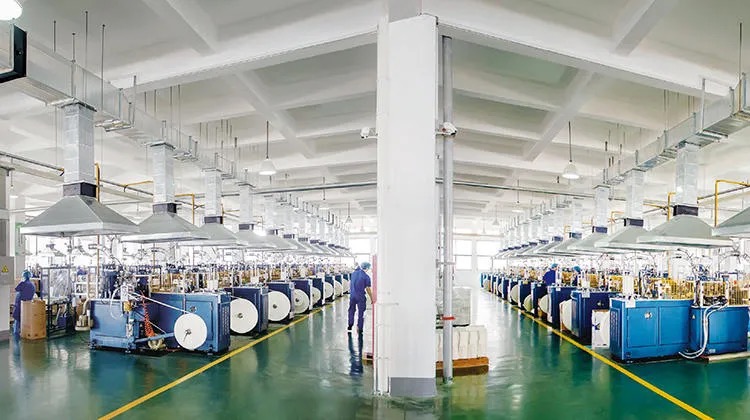- China dominates global compostable bag production with 75%+ market share, offering lower costs, superior supply chains, and advanced R&D.
- Vietnam is emerging as a China+1 alternative, especially for US/EU exports (avoiding tariffs), but 60-70% of raw materials still come from China.
- Future Outlook: Vietnam’s industry is growing, but China remains the leader for complex, high-volume orders.
1. Cost Comparison: China vs. Vietnam
| Factor | China | Vietnam |
|---|---|---|
| Raw Material Cost | $2.10/kg (local PLA/PBAT) | $2.50/kg (mostly imported) |
| Labor Cost | $650–850/month | $400–550/month |
| Electricity | $0.07/kWh | $0.10/kWh |
| Land Rent | $6–9/m²/month | $4–6/m²/month |
| Total Cost (20μ PBAT Bag) | $0.026/pc | $0.032/pc |
Why Vietnam is 8–12% More Expensive?
- Heavy reliance on Chinese raw materials (PLA, PBAT, starch)
- Lower production efficiency (30% less automation than China)
- Longer lead times due to fragmented supply chain

2. Supply Chain & Production Capabilities
China’s Unmatched Advantages
Complete vertical integration – From PLA resin (Corbion, BBCA) to finished bags
2-week mold production vs Vietnam’s 4+ weeks
Best for complex products (multi-layer films, custom printing)
Vietnam’s Growing But Limited Capacity
⚠️ 80% of PBAT/PLA imported from China/Thailand
⚠️ Few local experts in high-end biodegradable films
⚠️ Minimum orders 2-3X higher than Chinese factories
Trade War Impact:
- Current US tariffs: 25% on Chinese compostable bags vs 0% for Vietnam
- 2025 risk: Potential 60% tariffs if Trump reinstates China sanctions
Impact of Geopolitical Factors
Current trade issues between China and the US push many firms to look at places like Vietnam as alternative manufacturing spots. The “China+1” idea is gaining ground, where companies stay in China and also expand to other regions to handle risks related to tariffs and political tensions. This approach could speed up Vietnam’s infrastructure growth if more firms choose to invest in local supply chains.

3. Quality & Certifications
| Standard | China | Vietnam |
|---|---|---|
| Testing Labs | 150+ certified facilities | Under 20 (mostly foreign-owned) |
| BPI/OK Compost | Standard for major suppliers | Only top-tier factories comply |
- Chinese bags meet stricter EU/US/Japan standards
- Vietnam’s best factories are Chinese-owned (transferring technology)
4. Future Trends (2025–2030)
🔮 China leading in next-gen PHA marine-degradable materials
🔮 Vietnam may capture 25-30% of US/EU imports if tariffs rise
🔮 Thailand/India emerging as dark horse competitors
Conclusion: Which Should You Choose?
✔ China is better for:
- Cost-sensitive buyers
- Complex/customized bags
- Fast turnaround orders
✔ Vietnam makes sense for:
- US/EU-bound shipments
- Buyers needing tariff protection
- Simple, labor-intensive products
Picking between China and Vietnam hinges on current demands against future planning. Assess expenses, supply chain preparation and market directions to determine which fits your company targets.
FAQ
1. Why is China leading in compostable bag manufacturing?
China leads due to its complete supply chain integration, access to low-cost raw materials like PLA and PBAT, and advanced automation. Chinese factories can turn around molds in two weeks and offer custom solutions at scale, which Vietnam is still catching up on.
2. Is Vietnam a good alternative to China for compostable bag production?
Vietnam is a viable China+1 option, especially for US and EU buyers aiming to avoid tariffs. However, 60–70% of Vietnam’s raw materials are still imported from China, and production capacity is less automated, leading to higher costs and longer lead times.
3. Which country offers better compostable bag certifications?
China has over 150 certified testing labs and most factories comply with international standards like OK Compost and BPI. In Vietnam, only top-tier or foreign-owned facilities meet these benchmarks. For strict markets like the EU and Japan, China-based suppliers are more reliable.
4. How do tariffs impact compostable bag sourcing from China and Vietnam?
As of 2025, the US imposes 25% tariffs on compostable bags from China, while Vietnam enjoys 0% tariffs. If additional sanctions return, Vietnam’s advantage may increase, making it more suitable for tariff-sensitive buyers.
5. What factors should I consider when choosing between China and Vietnam?
You should assess raw material origin, production lead time, certifications, cost per unit, automation level, and geopolitical risks. For high-volume, customized, or complex products, China is still the best option. Vietnam suits simpler products and buyers prioritizing tariff avoidance.

